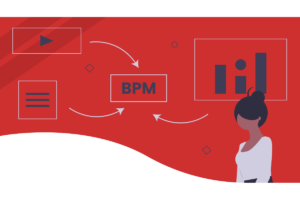Indicators 🌡️ are very important to manage processes.
Indeed, to fully understand and assess situations and ensure the smooth running of the operations, the process analyst must be able to rely on relevant information. The indicators help to alert, to correct a situation or to take preventive measures.
What is an indicator?
An indicator is a piece of information or a set of information making it possible to highlight a situation, a result or an evolution in an objective manner.
Be careful, choosing an indicator is not always easy.
An indicator must make sense. To do this, it is often compared with a benchmark indicator 🟢.
The benchmark indicator can be a target, an objective, a past situation or even an external or contractual standard.
It is thus possible to assess a current situation, to detect deviations from the objective but also to assess a situation over time (progress, stability or deterioration).
The management of process performance is much broader than the management of just financial indicators. Indicators of effectiveness, efficiency and relevance must be added. All of these indicators together are generally called KPIs 📊.
Here are the different types of indicators.
- Activity indicators are used to monitor the number and types of activities implemented in a process and the resources committed.
- Effectiveness indicators are used to determine whether or not the activity has achieved the targeted objectives or produced the desired results.
- Efficiency indicators make it possible to analyze the relevance of the use of means with regard to the objectives achieved.
- Quality indicators make it possible to measure the conformity of processes with respect to a reference or a standard.
- Satisfaction indicators make it possible to understand the perception of the performance of the organization for the beneficiaries of a service (internal or external to the company).
It is often easy to find lists of indicators that relate to a given industry.
However, special care must be taken to ensure that the indicators are well adapted and above all accepted by employees.
Indeed, an indicator is a choice. It must therefore necessarily be aligned with the strategy and objectives of the organization.
Here are some characteristics necessary for a good indicator.
👉 Relevant
Just a figure doesn’t make necessarily a good indicator. There must be a reason to use it as an indicator.
👉 Simple
An indicator must be understood and usable by all actors. A suitable graphic representation can be of great help.
👉 Measurable
An indicator can be quantified using an objective method
👉 Reliable
An indicator must reflect information that is fair, valid, precise and stable over time. The measurement must be exact and undeniable in order to avoid approximations or interpretation.
Respecting these characteristics help to avoid unnecessary indicators which, instead of providing better visibility, make the situations to be analyzed more obscure.
So be vigilant in defining your indicators and your dashboards to promote a management of your processes that is both effective and efficient.



